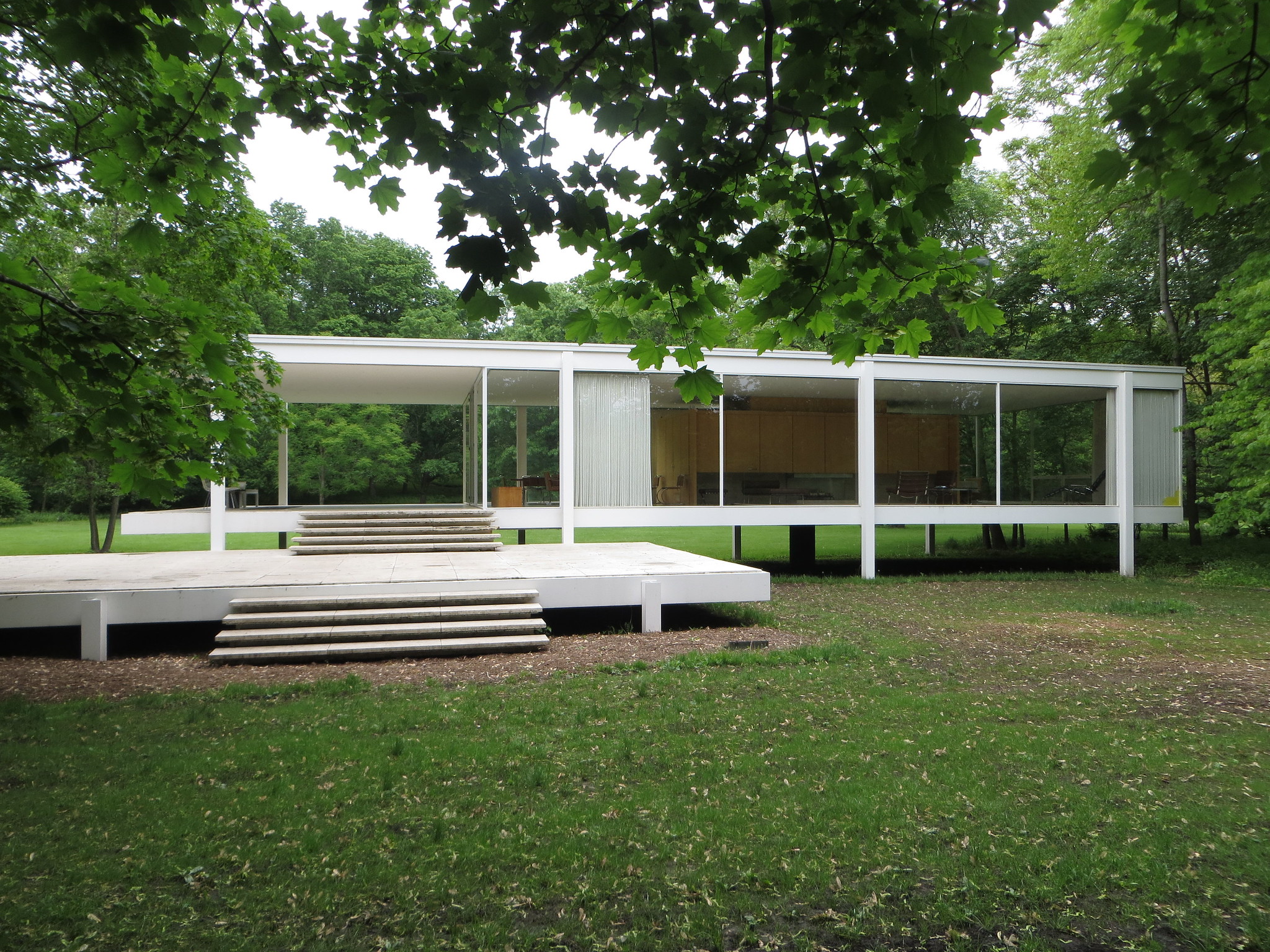The New York Times Style Magazine released an article in early August compiling a curated list of twenty-five of the most significant works of postwar architecture. Of the buildings selected, three hold deep connections to Chicago and the city’s architectural legacy; The Farnsworth House, Amanda Williams’ “Color(ed) Theory,” and the Johnson Publishing Company Building.
Farnsworth House
The Farnsworth House, considered one of Ludwig Mies van der Rohe’s masterpieces, sits on the isolated floodplains facing the Fox River in Plano, Illinois. Designed in 1945, the house was used as a retreat from the urban world for Edith Farnsworth, a native Chicagoan. The Farnsworth House was brought up repeatedly by the New York Times Style Magazine jury as many of its members admired the discipline displayed by the house’s design.

“Colored(ed) Theory”
Chicago based artist, Amanda Williams’, “Color(ed) Theory” series was also selected as one of the most significant postwar pieces of architecture.
Williams spent two years on the South Side of Chicago painting abandoned and condemned houses based on colors she found in products targeted towards Black communities. The series provokes observers to think about the many complex forces that shape cities and their relationship to color. Using vibrant violets, teals, and turquoise, Williams metamorphosed the almost destroyed houses into works of art. The eight illuminating houses continue to encourage future discussions on the complexities of race, place, and value in Chicago today.

Johnson Publishing Company Building
John W. Moutoussamy’s 1971 Johnson Publishing Company Building located in downtown Chicago also made the New York Times Style Magazine list. The eleven-story building housed the offices of iconic magazines including Jet and Ebony, which represented the culture and style of America’s black community in the late nineties. The interior of the Johnson Publishing Building is filled with an art collection as well as opulent colors and textures reflecting the decorating styles of the 70s. Even today, the Johnson Publishing Company Building is one of the few urban skyrises designed by a black architect.
The entirety of the article can be read here.

